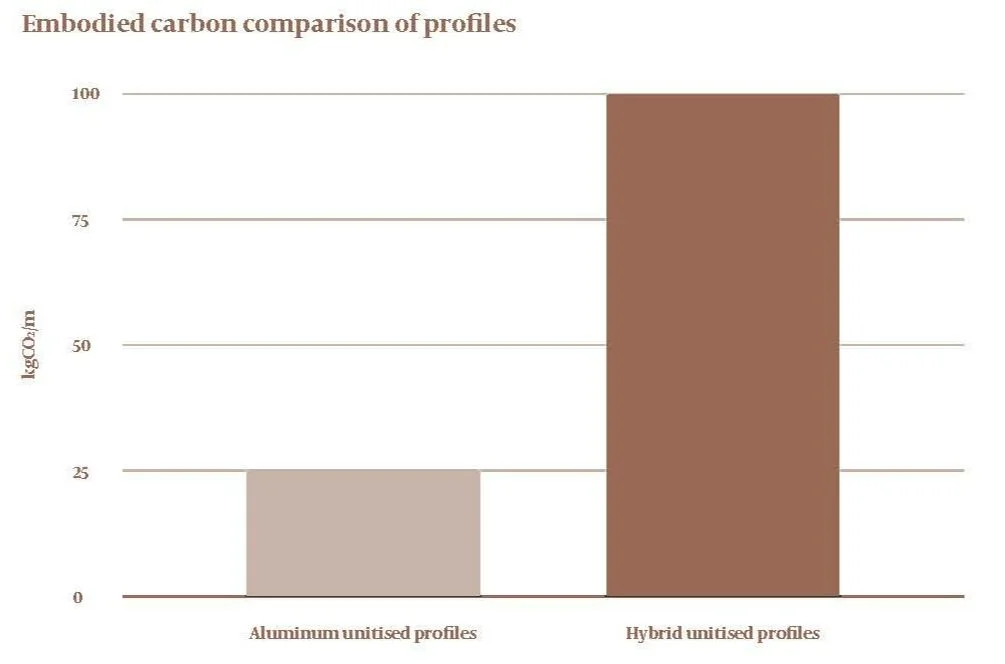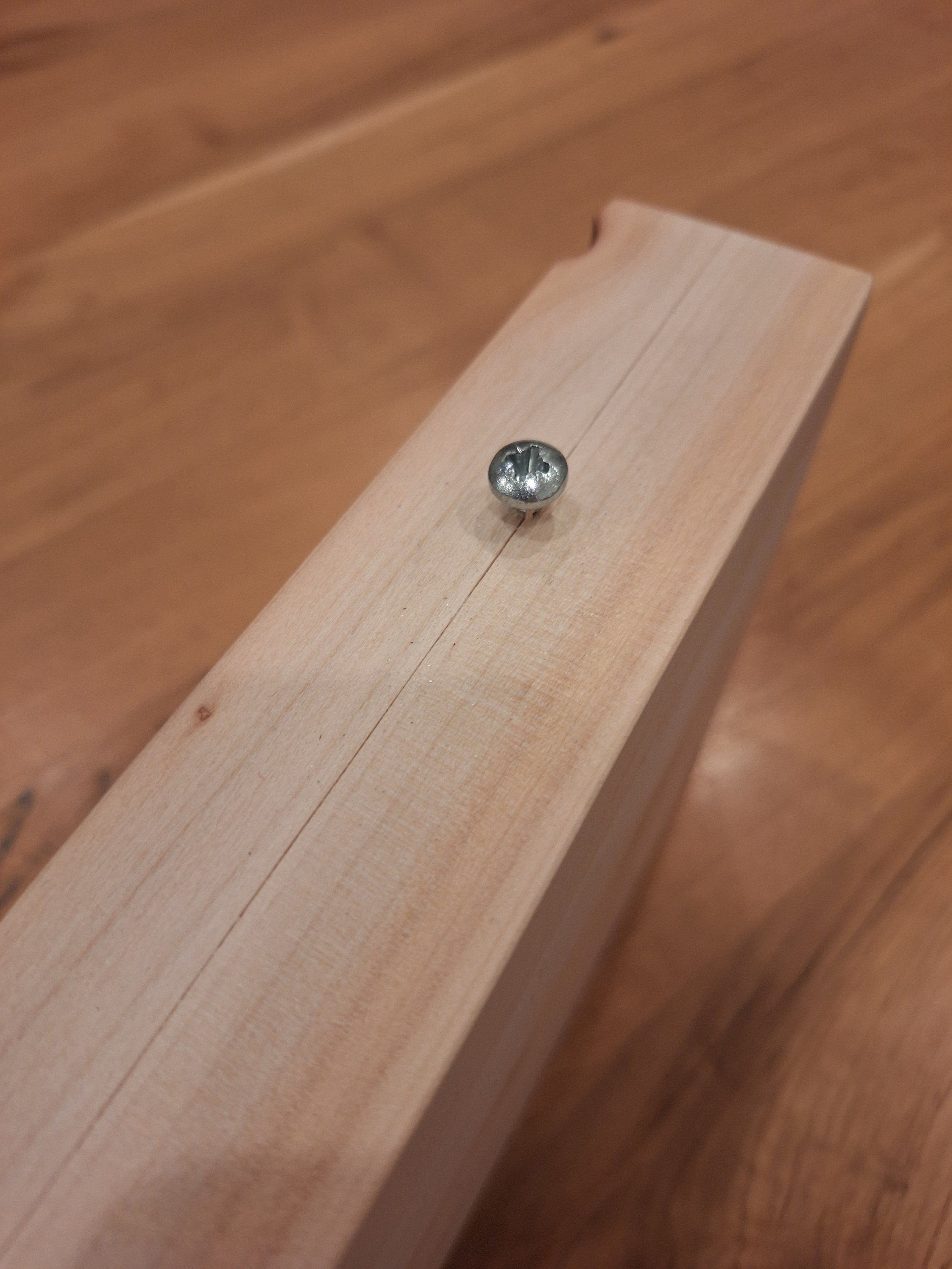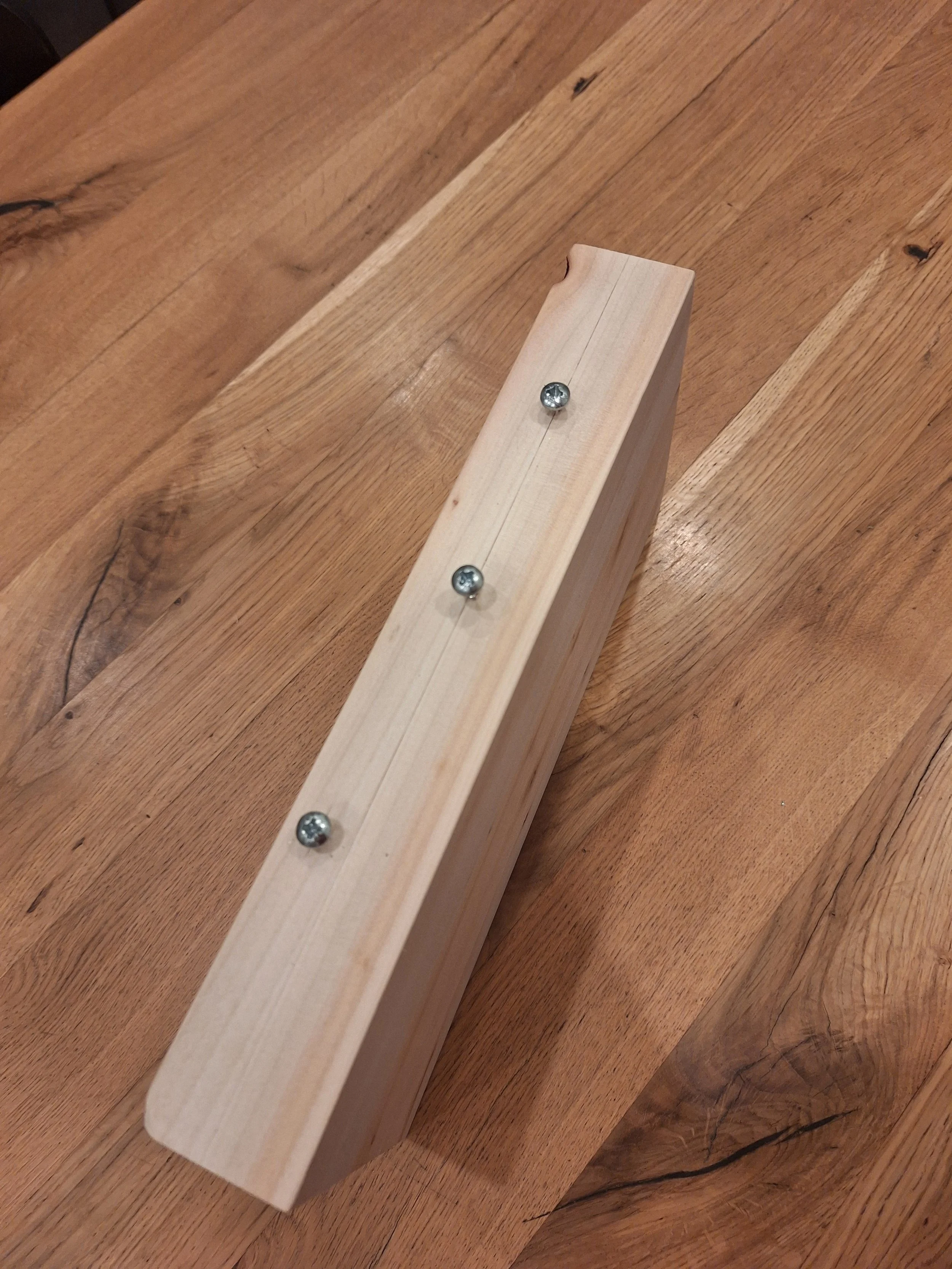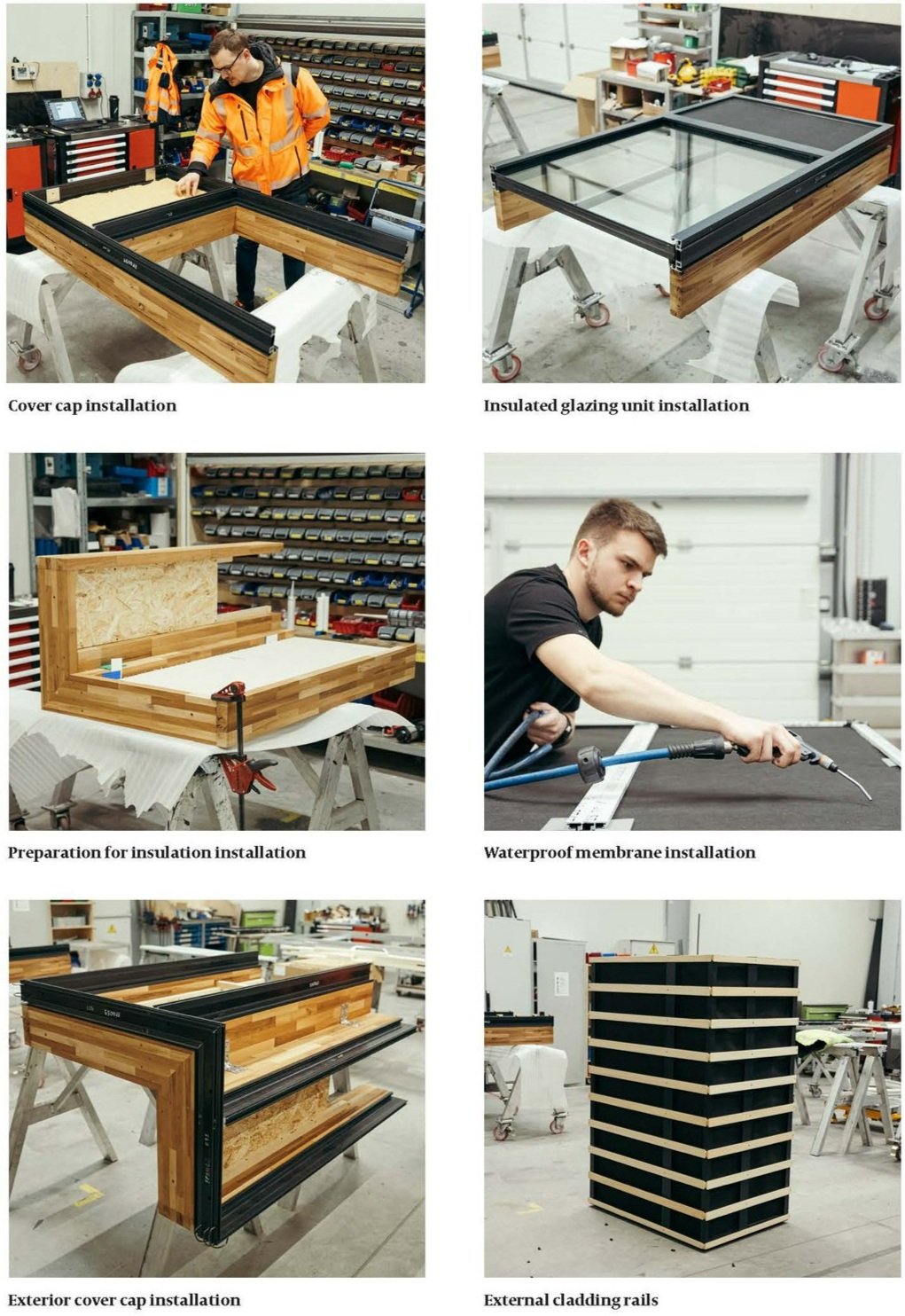04 Pre-Manufacturing
↑ Mockup production ― Courtesy of Staticus
Can innovative systems be cost-effective?
The integration of digital craftsmanship in the production of prefabricated unitised facade systems offers significant advantages in terms of efficiency and quality. By shifting traditional craftsmanship processes to digital design and manufacturing methods, these units can be produced with exceptional precision. This ensures consistency in quality while reducing the margin for error. Prefabrication streamlines the construction process by allowing units to be quickly assembled on-site, minimizing labor costs, reducing site disruptions, and ultimately shortening overall project timelines.
Hybrid unitised facade system
The willow facade developed as part of this project is a hybrid unitised curtain wall system. The willow laminated section replaces a traditional aluminium profile, reducing the embodied carbon of the overall facade system. Similar to traditional timbers, willow has a significantly lower thermal conductivity rate, improving the overall facade insulation performance. By introducing a hybrid system, with a high-recycled content, low-carbon external aluminium cover cap, the long-term performance of the facade is confirmed. This component ensures a continuous weather, thermal and vapour barrier over the lifecycle of the building, without replacement, as traditional timbers require.
Embodied carbon
Willow offers significant environmental benefits by absorbing more carbon than traditional timber species. Its rapid growth rate allows it to sequester carbon efficiently throughout its lifecycle. Additionally, using willow as a locally sourced material further reduces the embodied carbon of building elements by minimizing emissions associated with transportation and resource extraction.
When comparing willow hybrid unitised facade systems with high recycled content aluminium cover caps to standard aluminium unitised facade systems, for a standard unit size, there is a potential embodied carbon emission saving of up to 150 kgCO2e/m2FSA (facade surface area). Depending on a project’s facade-to-floor ratio, this translates to an embodied carbon savings between 50 - 75 kgCO2e/m2GIA or 1 - 1.5 kgCO2e/m2GIA/year. At a framing component level, there is a potential 75% embodied carbon emissions saving, per linear metre of framing. Noting, these assumptions exclude the biogenic factor or the sequestrated carbon and were based on engineering judgement. Verified EPD data was not available for the willow product.
Drill tests for the potential for splitting
Since the potential for splitting in willow had not been previously explored, drill tests were conducted to assess its structural behavior when fastened with screws. A small willow sample was used for this experiment, where three screws (L100mm) were driven in—two positioned straight between glued boards and one placed in the center.
The results showed no splitting, indicating that the material could potentially withstand mechanical fastening without structural failure. This initial test provides promising insights for the continued development of the cladding system, though further large-scale testing may be required to confirm performance under different conditions.
↑ Drill tests for the potential of splitting using L100mm screws ― Courtesy of Staticus
Laminated sections
Initial testing of willow samples involved drilling to assess the risk of splitting, with no visible cracks or material failure observed. Additionally, density measurements were taken to compare willow’s properties to traditional Glulam softwood.
However, due to time constraints for the exhibition, the heat-treatment process was accelerated, which led to unexpected challenges—specifically, the splitting of laminated sections. This issue is suspected to be caused by drying the laminated sections together rather than individually before assembly. It is believed that pre-drying the individual sections before lamination may improve stability and prevent splitting.
For the full-scale mockup, the heat-treated laminated willow sections were cut to size and predrilled. Despite the cracking issue, the framing was successfully assembled, and necessary repairs were made to the affected laminated sections. Moving forward, refining the heat-treatment and drying process will be critical to ensuring long-term material stability.
↑ Raw & heat-treated laminated sections ― Courtesy of Staticus
↑ Mockup process― Courtesy of Staticus









